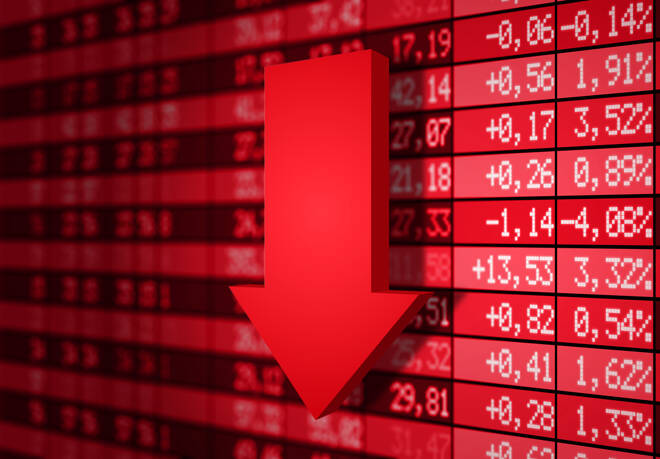Advertisement
Advertisement
Investors Throw in the Towel, with Equities, Commodities and Cryptos Falling into the Abyss
By:
Can it get any worse? It certainly can when considering how far riskier assets have climbed in the bullrun. Trump didn't think zero rates meant this...
It’s been quite a start to the week for the global financial markets.
U.S President Trump set out his cart going into the week talking up the FED’s 2nd emergency move in a matter of weeks.
The U.S President may have hoped that the move would restore market confidence, instead the move shook the markets to its core.
While investors in emerging economies welcome such moves, investors in developed markets certainly prefer more measured responses.
One has to question what influence the U.S administration had on the FED over the weekend. The FOMC was due to deliver their scheduled March monetary policy decision and FOMC economic projections on Wednesday.
With the coronavirus spreading globally, one has to question why the FED was not able to wait.
The only answer could have been that FOMC members knew something that we did not and it couldn’t have been good.
The Dollar
The U.S Dollar Spot Index took a hit in response to the move, as demand for U.S Treasuries surged.
At the time of writing, the Dollar Spot Index was down by 0.65% to 98.107. When considering the FED’s latest move and market reaction, it could have been a lot worse. We’ve seen support kick in over the European session, with the Dollar recovering from a day low 97.446.
What the U.S President hadn’t anticipated, however, was a slump in the global equity markets, and the U.S equity markets in particular.
The S&P500 triggered the circuit breakers at the open and that came after the futures markets hit their limit down levels.
At the time of writing, the S&P500 was down by 8.14%, with the Dow and NASDAQ sliding by 9.35% and 9.32% respectively.
Looking across the other asset classes, it wasn’t much better.
WTI and Brent were down by 7.69% and 10.31% respectively, with Gold Spot down by 3.83%.
When we talk about investors selling their shirts, even the cryptocurrency markets took another hit going into the U.S session.
At the time of writing, Bitcoin was down by 9.75%, with the sell-off coming off the back of a 33% slide from last week.
Safe havens for now, Cash and the Japanese Yen, which was up by 1.57% to ¥105.93 at the time of writing. ¥100 levels still look on the cards, with investors already burned from jumping back in too early. Friday’s rally was a dead cat bounce to remember.
What Lies Ahead
When considering the economic data out of China this morning and the margin by which economists got it wrong, there’s plenty of reason for investors to hold back from jumping back in.
We’ve yet to see the spread of the virus slow in the West. While EU member states have begun to take bolder steps to contain the virus, it is considered to be too late if the moves in the markets are anything to go by.
The same goes for the U.S. Trump and the administration had initially talked down the impact of the coronavirus on the U.S economy. Just a matter of weeks later, the FED delivers the move of all moves. The move leaves very little ammunition should the virus linger for longer than anticipated.
In recent days, the administration has stated that things should get better as the weather improves. It may be worth noting that the virus has spread across Asian countries, including Singapore, where temperatures average are as high as 35C…
While fiscal policy support is now a must, there’s unlikely to be too much that governments can offer in shutdown mode. One can only assume that the U.S will follow China and the EU into more stringent containment measures. Such moves will likely only further mute the impact of monetary policy near-term.
Tomorrow’s U.S retail sales figures may be the last bit of positive for a while. This is assuming that China’s shut down wasn’t an early warning signal.
Just a month ago, investors were basking in the sun. U.S equity markets were at record highs and Trump was eyeing a 2nd term.
While the Democratic Primaries have been impacted by the coronavirus, the Republicans have taken a heavy blow… It now remains to be seen whether Trump can get up from the canvas. It may ultimately be in the hands of COVID-19.
About the Author
Bob Masonauthor
With over 28 years of experience in the financial industry, Bob has worked with various global rating agencies and multinational banks. Currently he is covering currencies, commodities, alternative asset classes and global equities, focusing mostly on European and Asian markets.
Latest news and analysis
Advertisement
